Technical Newsletter
Issue 31
Slope Stabilization in a Seismic Region
Since the start of the Segmental Retaining Wall (SRW) industry in the 1980s, modular block has been gaining more popularity because traditional retaining walls can be expensive and have long construction timeframes. With that popularity comes further knowledge and advancement in the industry. In 2002, Columbia University and Allan Block teamed up with Professor Hoe Ling and Professor Dov Leshchinsky to perform full scale seismic testing on shake tables in Japan. The result of these tests reshaped our understanding of dynamic pressures and provided enough evidence to change how the industry designs SRWs.
Slope stabilization in a seismic area came into play when the Dua family who owned property in Diamond Bar, CA and began looking at solutions for their residential site. The location of the residence was going to be tucked into a hillside that overlooked the surrounding area. In order to accomplish this, it was found that a series of retaining walls would be required and that global stability would need to be addressed due to the large grade change.

ABI Engineering Consultants was hired to explore options for the site and find the most feasible solution. ABI quickly determined that retaining walls would be required, but prior to designing the walls, global stability was the biggest concern. Before moving forward, the soil below the wall had to be excavated and stabilized in order to begin the retaining wall. By using geogrid in the slope below the retaining wall, the slope instability was mitigated and the wall construction could begin on the stable reinforced slope.
With the location of the project and the experience of ABI Engineering, they felt that an Allan Block SRW would be the best solution for the site due to the ability for the system to flex during a seismic event. Due to the seismically active region, ABI Engineering carefully considered their seismic design and chose to use a horizontal peak ground acceleration, Ao, of 0.4g (typical Ao values range from 0 – 0.4g). For more information on the seismic acceleration, see the inside article titled “Selecting an Appropriate Seismic Acceleration Value.”
Jimmy Wang from ABI was the primary designer. Using the AB Walls design software in conjunction with ReSSA Global Stability modeling software, Jimmy was able to confidently design a complicated site in a very active seismic zone. With the design complete, the Dua’s, working with Orco Block, secured a Certified Contractor to build the retaining walls.
With ABI overseeing the wall construction, the Allan Block walls were a huge success. Since the rest of the project was relying on the walls to be in place and stable before progressing, the client could now pursue the next phase to start construction on the residence with a stable hillside.
Selecting an Appropriate Seismic Acceleration Value
Many questions have arisen over the years on what seismic acceleration should be used when designing a retaining wall. Typically, the seismic acceleration is a value that is determined by a local geotechnical engineer as they have the most experience and knowledge for site specific design criteria. What if the geotechnical engineer needs guidance? What code do they turn to? What coefficients are used? These are all great questions that arise on wall designs.
Within the Segmental Retaining Wall industry, Allan Block has been one of the leading resources since the beginning of modular block walls. As an industry leader, Allan Block refers to AASHTO to decipher seismic design requirements for SRWs. In addition, the National Concrete Masonry Association (NCMA) and Federal Highway Administration (FHWA) also refers to AASHTO for guidance on SRW designs. With the entire industry focusing in on a single code when it comes to seismic acceleration of a retaining wall, this should be the reference that the geotechnical engineer turns to when they are not sure.
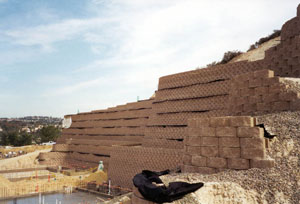
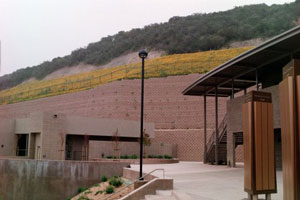
As stated in the NCMA Design Manual for Segmental Retaining Walls 3rd Edition, most earthquakes have a larger horizontal acceleration coefficient (kh) than a vertical acceleration coefficient (kv), therefore the vertical acceleration coefficient is most commonly neglected. In order to calculate the kh, the site specific seismic acceleration must be found which is referred to as A, Ao, or As, depending on which reference you are citing. That seismic acceleration is defined by AASHTO as “the Peak Ground Acceleration (PGA) adjusted for site effects” which we will refer to from hereon as As.
The US Geological Survey (USGS) has a website which allows the user to select the location of the site and input parameters to calculate the adjusted PGA. By using the USGS app, the As value can be calculated for the project location. Additionally, AASHTO allows “a 50% reduction in the resulting seismic coefficient” when 1 to 2 inches (25 to 50 mm) of ground deformation is permitted (AASHTO LRFD 2012 11-112). As the SRW industry allows a maximum of 3 inches (75 mm) of lateral deflection during a seismic event, the As previously calculated can be halved. If the designer is designing for a traditional or rigid retaining wall structure, AASHTO recommends using the full PGA for the dynamic pressure which is provided in Appendix A11.3.2 of AASHTO LRFD 2012.
The NCMA goes on to limit the As value to 0.45g within their Design Manual for Segmental Retaining Walls, 3rd edition if deflection is equal to 0 inches. This is provided in Section 9.4: Seismic Acceleration Coefficients of their design manual. AASHTO also refers to a similar range with lab and field testing as they state in Appendix A11 – Seismic Design of Retaining Structures within AASHTO LRFD 2012. This is why the SRW industry has been using a typical range of values from 0 to 0.4g and have shown exceptional performance.
Missing Guidance in California Building Code?
Throughout the years, there have been many codes to follow depending on locations around the country. When it comes to Segmental Retaining Walls in California, the 2013 California Building Code may not have enough guidance to allow the engineer of record to properly design a SRW. Since the SRW industry relies on AASHTO for the same guidance around the country, we would refer to AASHTO code as discussed within this article In this respect, all modular block designs refer to the same code within the US for seismic designs.
Best Practices for Seismic Designs
Allan Block Corporation created a Best Practices for Segmental Retaining Wall (SRW) Designs in 2014 which was used as a baseline for the industry to create the Segmental Retaining Walls Best Practices Guide by the NCMA. That document was written in conjunction with Allan Block and other industry leaders to provide the greatest amount of guidance to the designing engineer. Within the document, some of the following recommendations for seismic designs are:
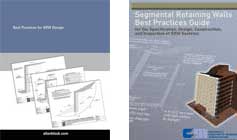
- Maximum geogrid reinforcement spacing of 16 inches (406 mm).
- Structural fill to be used within the entire geogrid reinforced zone.
- No less than 60% geogrid length for the upper and middle layers and 90% of the wall height or an additional 3 ft (0.9 m), whichever is greater, for the upper layer(s).
- When dealing with a slope above a wall with seismic loading applied to the wall, the same acceleration coefficient applied to the wall must also be applied to the stability calculations of the slope.
- The typical Mononobe-Okabe (M-O) seismic methodology places limits on the steepness of any slope above the wall.
- If it is determined that the desired slope is not allowed by the M-O method, the site grading should be altered or the wall height should be increased to reduce the steepness of the slope above.
- If the designer wants to use a more rigorous analysis method than the M-O method allows, a trial wedge, finite element or other method should be considered.
The intent of the Best Practices for SRW Design is to communicate, educate and expand the knowledge base for design of Segmental Retaining Walls (SRW) as determined by Allan Block Corporation based on 25 plus years of research, design and field experience. By doing so, the industry can lead towards a path for a Zero Wall Failure using Segmental Retaining Walls.
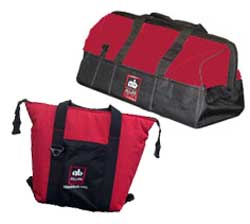
AB Walls Engineer Rewards Program
Allan Block is always working to be better and to provide you, our customers with the best tools available on the market to make you projects the most successful they can be. Our AB Walls design software is an industry leading program allowing the user the greatest in flexibility to design their Allan Block retaining wall projects. As an ongoing promotion, Allan Block Corporation has been rewarding the AB Walls registered engineer for designing their first project each calendar year using the AB Walls software. Please contact the Allan Block Engineering Department for more details at 800-899-5309 or by email at engineering@allanblock.com.
AB Walls Online Training Series - Earn CEU’S
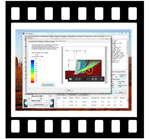
Allan Block has created an online training series for Engineers. This series begins with basic and advanced tutorials on the AB Walls Design Software. Engineers now have the ability to register and sign in to watch individual videos within the training series.
Like all Allan Block training modules, the online training series complies with the IACET requirements and allows AB Corporate to award CEU's. In order to request a credit hour for online training, you must first complete individual assessments upon watching each video.



